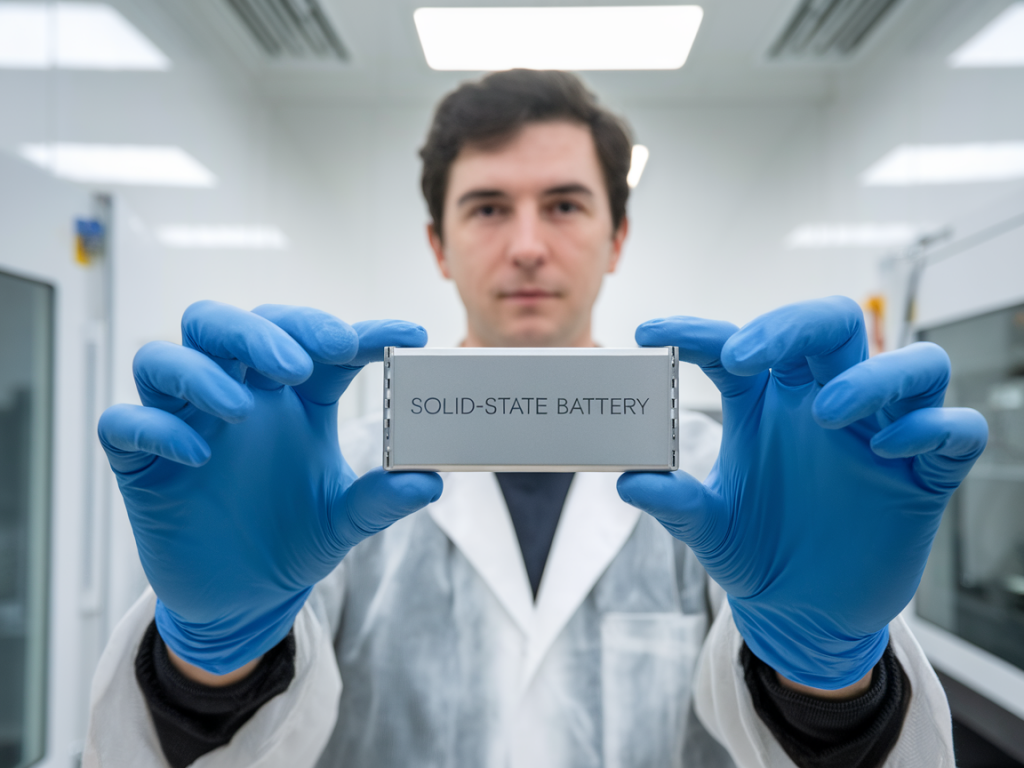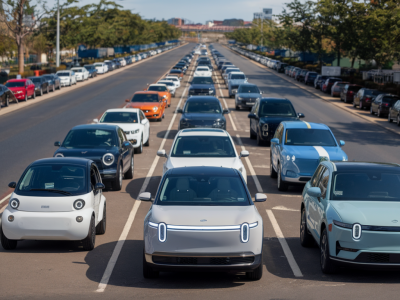
Hello everyone,
When it comes to emerging technologies that could redefine the way we power our world, *solid-state batteries* are one of the hottest topics on the table. You might have heard this term tossed around in discussions about next-gen electric vehicles (EVs) or cutting-edge clean tech innovations. But what exactly are solid-state batteries, and why are so many people in the renewable energy and sustainability space so excited about their potential? Let’s dive in and explore the game-changing promise of this technology.
What Are Solid-State Batteries?
To put it simply, solid-state batteries are an evolution of the traditional lithium-ion batteries that currently power everything from your smartphone to your electric car. The key difference lies in the electrolyte, which is the medium through which ions move between the battery’s anode and cathode during the charging and discharging process. In conventional lithium-ion batteries, this electrolyte is a liquid. In solid-state batteries, as the name suggests, the electrolyte is solid.
This small-sounding change comes with some major advantages, many of which could play a pivotal role in shaping the future of energy storage and clean technology. Let me break it down for you.
The Key Benefits of Solid-State Batteries
Why all the buzz around solid-state batteries? Here are some of the most exciting potential benefits:
- Higher Energy Density: Solid-state batteries promise much higher energy density compared to their liquid electrolyte counterparts. This means they can store more energy in the same physical space. For EVs, this could translate into longer driving ranges on a single charge, which addresses one of the biggest hurdles to mass EV adoption.
- Improved Safety: Traditional lithium-ion batteries come with a risk of overheating and even catching fire, thanks to the flammable liquid electrolyte. Solid electrolytes eliminate this danger, offering a much safer alternative that could boost consumer confidence, especially for EV users.
- Faster Charging: Many experts believe that solid-state batteries have the potential to support ultra-fast charging, enabling users to achieve near-full charges in just minutes rather than hours.
- Longer Lifecycle: Solid-state batteries are less prone to the wear and tear that plagues conventional lithium-ion models. This means devices and vehicles using solid-state technology could enjoy a significantly extended lifespan, reducing waste and cutting costs over time.
It sounds transformative, doesn’t it? But like any technology in its infancy, solid-state batteries face hurdles that need to be overcome before they can go mainstream.
What Are the Current Challenges?
While solid-state batteries might sound like the ultimate solution, the road to their widespread adoption is not without its challenges. Here’s what’s holding them back:
- High Production Costs: At present, manufacturing solid-state batteries is significantly more expensive than producing traditional lithium-ion batteries. This cost barrier makes it challenging for them to compete economically, especially in markets like consumer electronics and electric vehicles.
- Scalability: Producing solid-state batteries at scale has proven to be a tough nut to crack. Issues such as achieving consistent performance and ensuring the durability of solid electrolytes are still being addressed by researchers and manufacturers alike.
- Material Challenges: Some solid electrolytes are prone to forming dendrites—tiny needle-like structures that can pierce the solid electrolyte and lead to battery failure. Overcoming this issue is critical for ensuring the reliability of these batteries.
Who's Leading the Charge in Solid-State Battery Development?
As with any groundbreaking technology, several frontrunners are working tirelessly to make solid-state batteries a commercial reality. Here are some of the key players to watch:
- QuantumScape: Based in California, QuantumScape has become one of the most high-profile names in the solid-state battery space, particularly after partnering with Volkswagen to co-develop batteries for future EVs. They’re focused on solving some of the major technical challenges, like increasing the energy density and lifecycle of these batteries.
- Toyota: Toyota is aggressively exploring solid-state battery technology, aiming to incorporate it into their next generation of electric vehicles. The company has promised exciting breakthroughs in energy density and charging times.
- Samsung: Samsung has been making headlines with its advancements in solid-state battery technology, including prototypes that boast substantially higher longevity compared to current lithium-ion options.
These companies—and countless others—are convinced that solid-state batteries hold the potential to disrupt not just the EV market, but entire industries from renewable energy storage to consumer electronics.
Could Solid-State Batteries Help Us Achieve Climate Goals?
Let’s take a moment to step back and consider the bigger picture. What could the successful rollout of solid-state batteries mean for our transition to renewable energy and a carbon-neutral future?
First, the increased energy density of solid-state batteries could make renewable energy storage much more efficient. Imagine solar panels or wind turbines equipped with cutting-edge batteries that can store excess energy for longer periods, making renewable energy more reliable and meeting grid demands seamlessly.
Second, for transportation—a field responsible for a large chunk of global carbon emissions—the longer range and shorter charging times of solid-state batteries could significantly accelerate the adoption of EVs. As more drivers switch from internal combustion engines to electric vehicles, we’ll see a noticeable reduction in greenhouse gas emissions.
And finally, these batteries’ extended lifespan could help reduce electronic waste—a growing problem in today’s tech-driven world. With fewer batteries needing replacement, manufacturers can ease the production strain on resources like lithium and cobalt, which often come from environmentally and ethically challenging sources.
What Does the Future Hold?
It’s an exhilarating time to be involved in green innovation. While solid-state batteries are not yet ready for mass-market deployment, all signs point to rapid progress in this field. Governments, private companies, and research institutions are pouring billions of dollars into development, and we’re likely to see commercial applications entering the market within the next few years.
The potential of solid-state batteries goes far beyond simply being a "better battery." They represent a leap forward for humanity’s ability to store and utilize energy sustainably, efficiently, and safely—paving the way for solutions that could genuinely transform how we live and protect our planet.

